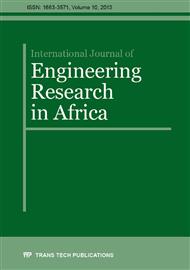p.1
p.13
p.25
p.37
p.49
p.65
Study on the Innovative Jewelry B2C Business Model in China and Africa
Abstract:
According to the forecast of relevant business data, current jewelry consumption in China and Africa has become increasingly active and has great potential for further development. For now, the industrial value chain of jewelry e-business as a whole is far from a mature state; industry convergence degree is relatively low; market segmentation is high; the demand of customers is large, however the supply is full of chaos. Under the general context of rapid development of e-commerce in the Internet, the structure of jewelry industry requires further adjustment and further improvements. The concept of symbolic consumption has been proposed to highlight the increasing significance of extending symbolic value and experience of the commodity. This paper conducted an innovative and exploratory study on the jewelry B2C business model in China and Africa based on the value of user experience. The contents of this paper include four aspects. Primarily, it analyzes the strengths and weaknesses of jewelry B2C business model. Customers become the main players in the market and can select jewelry products based on their own preferences. Secondly, it explains the value of user experience by exploring the emotions, memories, feelings and deeper identity of value during the consumption process to expand broader space for product value. Furthermore, it provides an explicit analysis of innovative jewelry B2C business model concentrating on combining jewelry with customers' emotions. In addition, it explores the implications of innovative B2C business model in the jewelry industry by creating superior customer experiences.
Info:
Periodical:
Pages:
65-77
Citation:
Online since:
July 2013
Authors:
Keywords:
Price:
Сopyright:
© 2013 Trans Tech Publications Ltd. All Rights Reserved
Share:
Citation:


